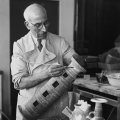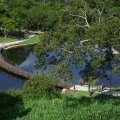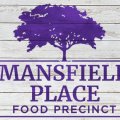The University of Queensland has advised the State Government of the results of soil quality testing at UQ’s Experimental Mine site at Indooroopilly.
The soil testing has confirmed some areas of lead contamination believed to stem from historic workings at the site, which operated as a lead and silver mine between 1919 and 1929.
There has been no ore extraction at the site since it was first leased by UQ more than 60 years ago.
UQ has reported the contamination to the Department of Environment and Heritage Protection in line with legal requirements. That report can be found here.
It is also advising owners and occupiers of neighbouring properties of the soil quality test results as a courtesy.
UQ Property and Facilities Director Alan Egan said the University had owned the Isles Rd property since 1967, and had leased it for some time before that. It has been used as a teaching, learning and research facility.
The contaminated soil appeared to have been processed after being extracted by mining. Previous risk assessments of the area had found no evidence that ore had ever been processed there.
“This contamination appears to be historical, pre-dating the University’s connection to the site,” Mr Egan said.
“It’s an unfortunate legacy that UQ has inherited.”
He said the Brisbane City Council had classified most of the site as “community use” and UQ had registered the experimental mine area as “land for wildlife”.
He said about 130 staff and 30 students worked or were based at the site.
Queensland Health’s Lead Safe Fact Sheet advises that lead that is breathed in as dust or ingested through eating and drinking can build up in the body over time, resulting in health problems.
Mr Egan said the location of the contaminated soil and the use of the site meant it was unlikely lead would be ingested or inhaled, or that anyone would have been exposed to it over an extended time.
“Regardless, we will continue to assess the situation to ensure people are not at risk and to provide everyone involved with the site with well-informed peace of mind.
“We will work with the relevant bodies to ensure the material is appropriately managed to minimise any health and environmental risks, if it is determined that such risks exist” Mr Egan said.
Media contact: Corporate Relations Manager Carolyn Varley, T: 3365 1120, M: 0413 601 248, c.varley@uq.edu.au
More information: The National Health and Medical Research Council has issued a public statement on lead which can be found here.













